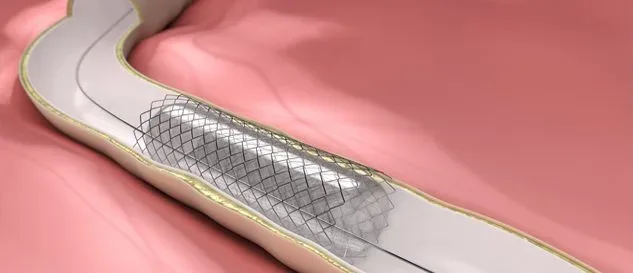Our interventional cardiology services focus on minimally invasive procedures performed in catheterization labs in Flagstaff or the Verde Valley. These services are available on an outpatient basis or with a minimal hospital stay.
Interventional cardiology focuses on catheter-based heart disease treatment. These procedures often involve the insertion of a catheter or hollow tube into the femoral artery in the upper leg. Using real-time X-ray, the catheter is guided toward the heart or vascular area during a procedure in the Cath Lab.
Cardiac procedures
Northern Arizona Healthcare has performed thousands of interventional and diagnostic procedures, including:
Balloon angioplasties
Balloon angioplasties create space in a blocked artery by inserting and inflating a tiny balloon. This balloon compresses the plaque blocking the artery against the wall of the artery, allowing blood to flow more freely.
Carotid stents and stroke intervention
During this procedure, a cardiologist inserts a stent to expand the carotid artery, which supplies blood to the brain. If plaque or a clot blocks the blood flow to the brain, it can cause an ischemic stroke, possibly resulting in brain damage or death.
Device closure of a patent foramen ovale
Device closure of a patent foramen ovale, or PFO, is a minimally invasive procedure involving a special implanted device to close a small, flaplike opening in the wall between the right and upper left chambers of the heart. Within a few months, tissue grows over the device and normal blood flow is restored.
Fractional flow reserve
This guide-wire procedure accurately measures blood pressure and flow through a specific part of the coronary artery. It is performed using a standard diagnostic catheter during cardiac catheterization.
Implantable cardioverter defibrillators
Implantable cardioverter defibrillators, or ICDs, treat patients at high risk for sudden cardiac arrest. An ICD uses electrical pulses to help control irregular, life-threatening heartbeats.
Intracoronary stenting
Intracoronary stenting permanently inserts a tiny, stainless steel, wire-mesh tube called a stent to keep arteries open following a balloon angioplasty. Both bare-metal and medication-releasing stents can be used.
Intravascular ultrasound
Intravascular ultrasound passes a small catheter into an artery. This catheter emits sound waves to produce an image of the blockage. The image gives the physician critical information on how to best manage the blockage.
Pacemaker insertion
Pacemakers are used in patients with abnormal heart rhythms or congestive heart failure. Wires, called leads, are inserted into the chambers of the heart. After proper positioning and conduction are confirmed, a small generator is connected to the leads and permanently placed just below the skin.
Peripheral atherectomy
This procedure involves cutting through plaque in a blood vessel outside the heart. The plaque is reduced to particles smaller than red blood cells, resulting in a smoother inner surface of the vessel and increased blood flow.
Transcatheter Aortic Valve Replacement (TAVR)
This procedure will replace a faulty aortic valve by passing a man-made valve through a temporary catheter that runs from the leg to the heart. TAVR is an alternative to open heart surgery.
Watchman
A small device is permanently implanted into the heart to prevent blood clots from escaping which reduces the risk of stroke for patients who are on long-term blood thinners because of Atrial Fibrillation (AFib).
Make an appointment
Take charge of your heart health and make an appointment today.

